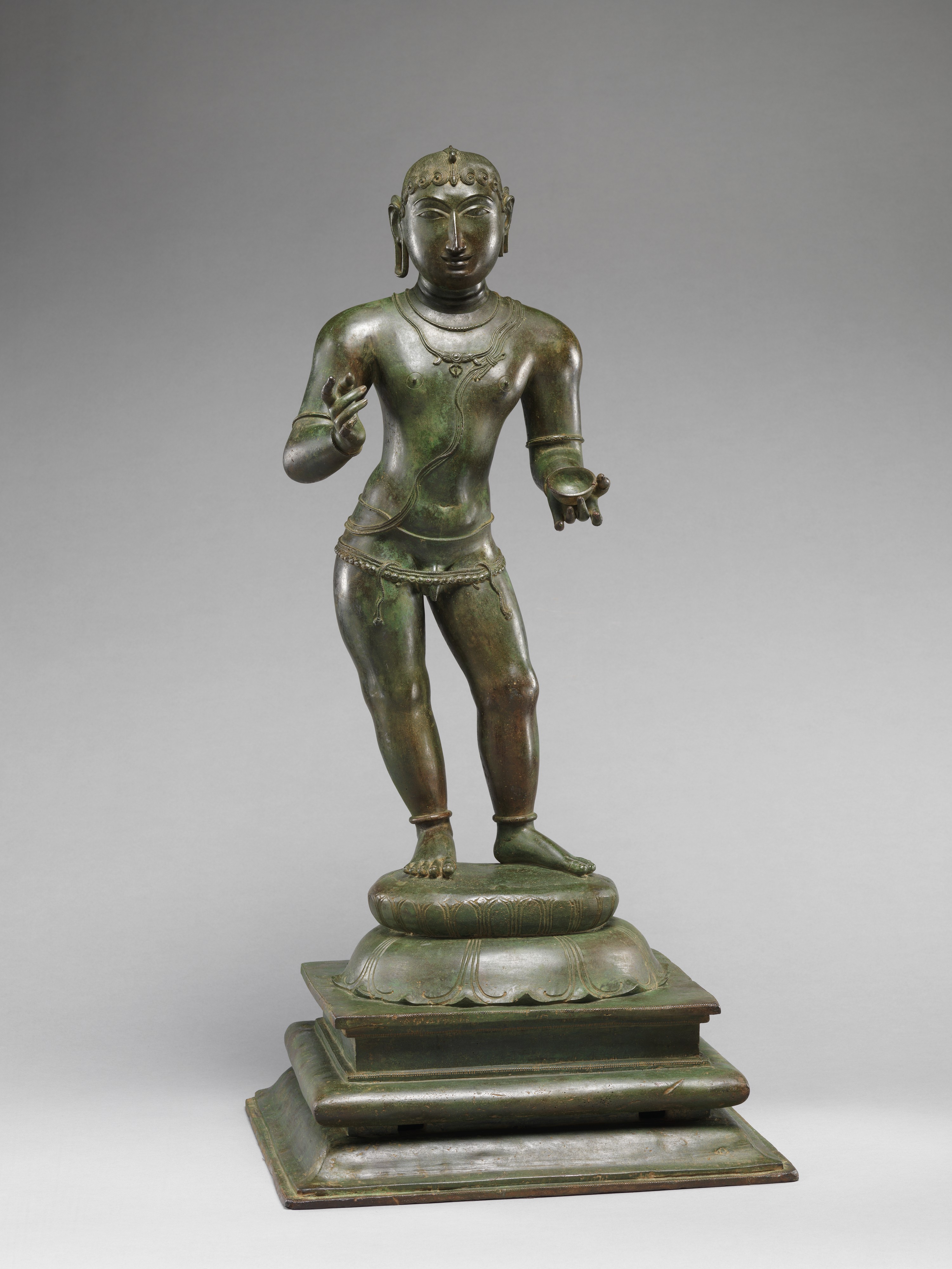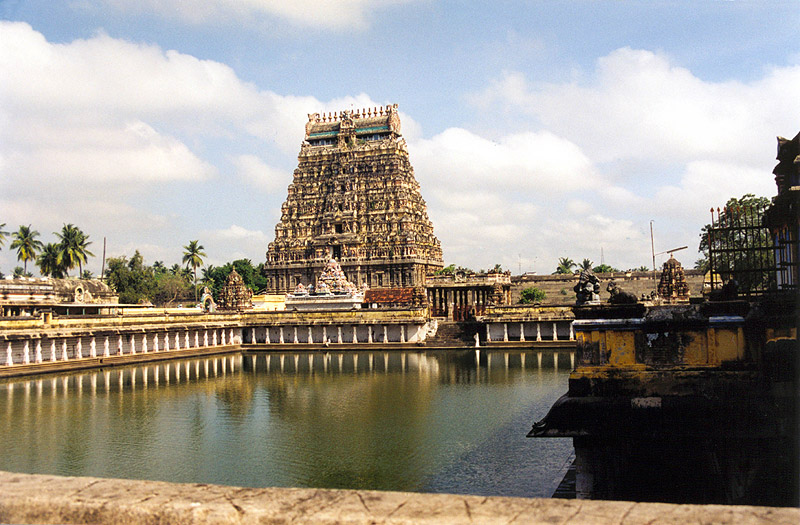|
Thirumeignanam Gnanaparameswarar Temple
):ta: திருமெய்ஞானம் ஞானபரமேஸ்வரர் கோயில் is a Hindu temple located at Thirumeignanam in Thanjavur district, Tamil Nadu, India. The temple is dedicated to Shiva, as the moolavar presiding deity, in his manifestation as Gnanaparameswarar. His consort, Parvati, is known as Gnanambikai. The place is also known as Tirunallur Mayaanam. Significance It is one of the shrines of the 275 Paadal Petra Sthalams - Shiva Temples of Tamil Nadu#Sthalams, Shiva Sthalams glorified in the early medieval ''Tevaram'' poems by Tamil Saivite Nayanars, Nayanar Tirugnanasambandar. Literary mention Tirugnanasambandar describes the feature of the deity as:Tirugnanasambandar Tevaram, II:46:8 References External links * * Shiva temples in Thanjavur district Padal Petra Stalam {{TamilNadu-hindu-temple-stub ... [...More Info...] [...Related Items...] OR: [Wikipedia] [Google] [Baidu] |
Dinamalar
''Dinamalar'' is an Indian Tamil daily newspaper. It was founded in 1951 by T. V. Ramasubba Iyer. ''Dinamalar'' has an average circulation of 942,812 (ABC Jan-June 2016) History Dinamalar was founded by T. V. Ramasubbaiyer on 6 September 1951 at Thiruvananthapuram. The operations were moved to Tirunelveli in 1957. Circulation The newspaper is printed in 10 cities in Tamil Nadu namely Chennai, Coimbatore, Erode, Madurai, Nagercoil, Pondicherry, Salem, Tiruchirappalli, Tirunelveli, Vellore and Bangalore. As of 2016, the newspaper has a circulation of 942,812. Content The investigative journal Cobrapost released an undercover investigation and video which exposed the executives of Dinamalar speaking of promoting Hindutva and promoting the agenda of Rashtriya Swayamsevak Sangh (RSS) and the Bharatiya Janata Party (BJP) in 2018. Cobrapost reported that the Director Lakshmipathy Adimoolam was devoted to the ideology of the RSS. In the operation, Adimoolam went on to say that hi ... [...More Info...] [...Related Items...] OR: [Wikipedia] [Google] [Baidu] |
Tirugnanasambandar
Sambandar (Tamil: சம்பந்தர்), also referred to as Tirugnana Sambandar (lit. ''Holy Sage Sambandar''), Tirujnanasambanda, Campantar or Jñāṉacampantar, was a Shaiva poet-saint of Tamil Nadu who lived sometime in the 7th century CE. He was a child prodigy who lived just 16 years. According to the Tamil Shaiva tradition, he composed an of 16,000 hymns in complex meters, of which 383 (384) hymns with 4,181 stanzas have survived. These narrate an intense loving devotion (''bhakti'') to the Hindu god Shiva. The surviving compositions of Sambandar are preserved in the first three volumes of the ''Tirumurai'', and provide a part of the philosophical foundation of Shaiva Siddhanta. He is one of the most prominent of the sixty-three Nayanars, Tamil Shaiva bhakti saints who lived between the sixth and the tenth centuries CE. He was a contemporary of Appar, another Shaiva poet-saint.''Encyclopaedia of Jainism, Volume 1, page 5468'' Life Information about Sambandar c ... [...More Info...] [...Related Items...] OR: [Wikipedia] [Google] [Baidu] |
Nayanars
The Nayanars (or Nayanmars; ta, நாயன்மார், translit=Nāyaṉmār, translit-std=ISO, lit=hounds of Siva, and later 'teachers of Shiva ) were a group of 63 Tamil Hindu saints living during the 6th to 8th centuries CE who were devoted to the Hindu god Shiva. Along with the Alvars, their contemporaries who were devoted to Vishnu, they influenced the Bhakti movement in early medieval South India. The names of the Nayanars were first compiled by Sundarar. The list was expanded by Nambiyandar Nambi during his compilation of material by the poets for the ''Tirumurai'' collection, and would include Sundarar himself and Sundarar's parents. The Nalvar () are the four foremost Nayanars Appar, Sundarar, Sambandar and Manikkavaasagar. History The list of the Nayanars was initially compiled by Sundarar (Sundararmurthi). In his poem ''Tiruthonda Thogai'' he sings, in eleven verses, the names of the Nayanar saints up to Karaikkal Ammaiyar, and refers to himself as "the serv ... [...More Info...] [...Related Items...] OR: [Wikipedia] [Google] [Baidu] |
Tevaram
The ''Thevaram'' ( ta, தேவாரம், ), also spelled ''Tevaram'', denotes the first seven volumes of the twelve-volume collection ''Tirumurai'', a Śaiva narrative of epic and puranic heroes, as well as a hagiographic account of early Saiva saints set in devotional poetry. The ''Thevaram'' volumes contain the works of the three most prominent Saiva Tamil poets of the 7th and 8th centuries: Sambandar, Appar, and Sundarar. The three poets were not only involved in portraying their personal devotion to Shiva, but also engaged a community of believers through their songs. Their work is an important source for understanding the Śaiva Bhakti movement in the early medieval South India. In the 10th century, during the reign of Rajaraja I of the Chola dynasty, these poets' hymns were collected and arranged by Nambiyandar Nambi. Starting with the ''Thevaram'' along with the rest of ''Tirumurai'' and ending with the ''Periya Puranam'', Tamil Saivism acquired a canonical set of ... [...More Info...] [...Related Items...] OR: [Wikipedia] [Google] [Baidu] |
Shiva Temples Of Tamil Nadu
Throughout India, there are a large amount of temples dedicated to Shiva, one of the principal deities of Hinduism. The most temples are in the South Indian state of Tamil Nadu, where there are 2,500 Shiva temples of importance. There are several kinds of temples in the South Indian state of Tamil Nadu. Pancha Bootha Sthalangal temples Pancha Booth Sthalangal are the temples that are the manifestation of the five elements – land, water, air, sky, and fire. Pancha Sabhai Sthalangal Panch Sabhai Sthalangal are the temples where Lord Shiva is believed to have performed the Cosmic Dance. Paadal Petra Sthalangal temples Shiva Temples which are glorified in Tamil Tevaram hymns are the Paadal Petra Sthalangal and have been in existence for more than 1,000 years. References to these temples are found in Tevaram Hymns, composed and authored by the 3 Nayanamars, Thirunavukarasar, Sambandar and Sundarar, who lived between 7th and 9th century CE. Chennai & Tiruvallur ... [...More Info...] [...Related Items...] OR: [Wikipedia] [Google] [Baidu] |
Paadal Petra Sthalam
The Paadal Petra Sthalam, also known as Thevara Sthalam, are 276 temples that are revered in the verses of Saiva Nayanars in the 6th-9th century CE and are amongst the greatest Shiva temples of the continent. The Divya Desams by comparison are the 108 Vishnu temples glorified in the poems of the contemporary Vaishnava Alvars of Tamil Nadu, India Thevaram Thevaram literally means "garland of divine songs" and refers to the collection of verses sung praising Shiva, the primary god of the Shaivite sect of Hindu religion, by three Tamil poets known as Saiva Kuruvars - Thirugnana Sambanthar, Tirunavukkarasar (aka Appar) and Sundaramoorthy Nayanar (aka Sundarar). The three are considered the primary three among the sixty three Nayanmars of the Saivite sect of Hinduism. The former two lived during the 7th century CE while the latter around 8th century CE. All songs in Thevaram are believed to be in sets of ten songs, called ''pathikam'' in Tamil. Some musical experts consider The ... [...More Info...] [...Related Items...] OR: [Wikipedia] [Google] [Baidu] |
Parvati
Parvati ( sa, पार्वती, ), Uma ( sa, उमा, ) or Gauri ( sa, गौरी, ) is the Hindu goddess of power, energy, nourishment, harmony, love, beauty, devotion, and motherhood. She is a physical representation of Mahadevi in her complete form. She is also revered in her appearances as Durga and Kali.Suresh Chandra (1998), Encyclopedia of Hindu Gods and Goddesses, , pp 245–246 She is one of the central deities of the goddess-oriented sect called Shaktism, and the chief goddess in Shaivism. Along with Lakshmi and Saraswati, she forms the Tridevi. Parvati is the wife of the Hindu god Shiva. She is the reincarnation of Sati, the first wife of Shiva who immolated herself during a yajna (fire-sacrifice).Edward Balfour, , The Encyclopaedia of India and of Eastern and Southern Asia, pp 153 Parvati is the daughter of the mountain-king Himavan and queen Mena.H.V. Dehejia, Parvati: Goddess of Love, Mapin, , pp 11 Parvati is the mother of the Hindu deities Ganesha and ... [...More Info...] [...Related Items...] OR: [Wikipedia] [Google] [Baidu] |
Moolavar
''Mulavar'' () or ''Mula-murti'' is a Sanskrit-Tamil term referring to the main deity, or a murti (cult image) in a Hindu temple. Location The central deity, ''mulavar'', is located near the centre of temples, than the images that surround them, and are precisely located at the points corresponding to the energies they represent on the temple plan's mythical power diagram. During the ''Kumbabhishekam'' or the coronation event, the temple is renovated, while the mulavar image is moved to a temporary location. The practice is called ''Balalayam'', during which a temporary image is housed in the sanctum. Sanctum Garbhagriha (lit. womb chamber) is a Sanskrit word referring to the interior of the sanctum sanctorum, the innermost sanctum of a Hindu temple, where resides the murti (idol or icon) of the primary deity of the temple. The sanctum is located at the centre of the temple, and its only opening mostly faces east. Only the ''pujari'' (priests) are allowed to enter the sanctum. T ... [...More Info...] [...Related Items...] OR: [Wikipedia] [Google] [Baidu] |
Shiva
Shiva (; sa, शिव, lit=The Auspicious One, Śiva ), also known as Mahadeva (; ɐɦaːd̪eːʋɐ, or Hara, is one of the principal deities of Hinduism. He is the Supreme Being in Shaivism, one of the major traditions within Hinduism. Shiva is known as "The Destroyer" within the Trimurti, the Hindu trinity which also includes Brahma and Vishnu. In the Shaivite tradition, Shiva is the Supreme Lord who creates, protects and transforms the universe. In the goddess-oriented Shakta tradition, the Supreme Goddess ( Devi) is regarded as the energy and creative power (Shakti) and the equal complementary partner of Shiva. Shiva is one of the five equivalent deities in Panchayatana puja of the Smarta tradition of Hinduism. Shiva has many aspects, benevolent as well as fearsome. In benevolent aspects, he is depicted as an omniscient Yogi who lives an ascetic life on Mount Kailash as well as a householder with his wife Parvati and his three children, Ganesha, Kartikeya and A ... [...More Info...] [...Related Items...] OR: [Wikipedia] [Google] [Baidu] |





